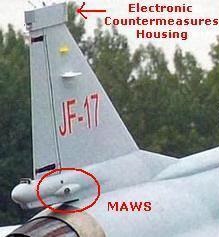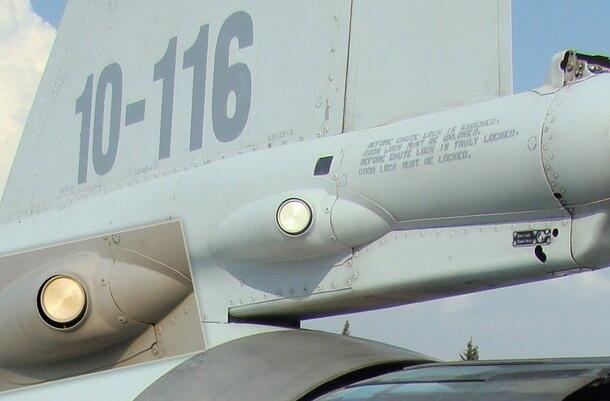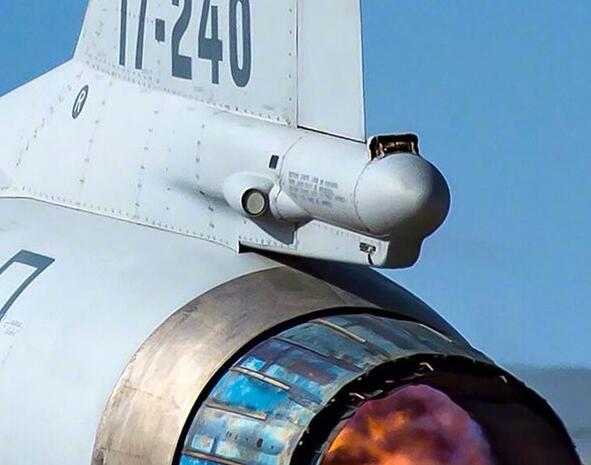-
Posts
509 -
Joined
-
Last visited
-
Days Won
1
Content Type
Profiles
Forums
Events
Everything posted by LJQCN101
-
MAWS is installed starting from later prototypes and is both seen in block I and block II (but usually caged). You can tell from the tail numbers that XX-1XX is a block I and XX-2XX is a block II.
-
Yes it is Block I.
-

JF-17 Thunder Updates, Screenshots and Videos (NO DISCUSSION)
LJQCN101 replied to uboats's topic in JF-17 Thunder
Reposting previous JF-17 major updates: WIP of external model & pylons (Comparing model with real life photo) WIP of cockpit model & panels EFM & FCS demo1: Spin Demonstration EFM & FCS demo2: Fly By Wire -
Yes, the cockpit is in English IRL.
-
All R-77s launched from AKU-170 (the only rack that carries R-77 on J-11A) will eject first, as it is a missile ejection rack.
-
It's kind of a hacked capability to be used with N001 radar, so no.
-

Using "throttle for GS and stick for AOA" when landing
LJQCN101 replied to LJQCN101's topic in DCS: F/A-18C
The Su-33 response less in pitch with airspeed/AOA change since it doesn't use AOA feedback as F18 does. For instance in F18, if your AOA increased by 0.5deg due to outside disturbance, the FBW will command nose down and it's a pretty big difference between trim AOA and actual AOA as seen by the system. While in Su-33, the FBW is using dynamic pressure as a function to artifically make the aircraft pitch up and down in a large range of airspeed. Suppose your airspeed also dropped by 2km/h due to the 0.5deg AOA increase, it's not a whole lot difference seen by the system and you probably wouldn't notice a mild pitch change immediately. The Su-27 response even less, so it's sometimes necessary to do active AOA control with the stick on these aircrafts. Edit in 2021: Seems I was wrong about the F-18 FCS being AOA command in PA mode. Ref: -

Using "throttle for GS and stick for AOA" when landing
LJQCN101 replied to LJQCN101's topic in DCS: F/A-18C
Well i see but basically the same with a blend of Nz and pitch rate feedback. Unless they are using the C*U law, there's still no airspeed feedback to provide artificial speed stability. Hence do not apparently similar to a hornet. ref http://www.icas.org/ICAS_ARCHIVE/ICAS2012/PAPERS/605.PDF -

Using "throttle for GS and stick for AOA" when landing
LJQCN101 replied to LJQCN101's topic in DCS: F/A-18C
Yeah, I believe most FBW fighters would adjust their control laws to mimic the stability characteristics of a conventional aircraft when landing. To name a few, F-16, F-18, M2000, JF-17, all of them (IIRC) utilise AOA feedback in Landing Mode to try to handle like a conventional aircraft. Su-27 and Su-33 uses dynamic pressure to schedule their pitch trimming law, but the results are similar. -

Using "throttle for GS and stick for AOA" when landing
LJQCN101 replied to LJQCN101's topic in DCS: F/A-18C
I found that in A320, there's no control logic change when landing gear down or flaps down, unlike F-16 or F/A-18. You'll be flying the aircraft in Flight Mode on approach, which means it still trims for 1G hands-off, until you transition to Flare Mode at 50' RA. F/A-18 however trims for a specific AOA when flaps half or full. This would result in a huge difference in handling. -

Using "throttle for GS and stick for AOA" when landing
LJQCN101 replied to LJQCN101's topic in DCS: F/A-18C
Fly a steady glideslope with the throttle first, and adjust pitch trim until on-speed. E.g. If you find your AOA a bit high, trim forward. Trim point will be different depending on C.G. location. You can play with different fuel state and store config. -

Using "throttle for GS and stick for AOA" when landing
LJQCN101 replied to LJQCN101's topic in DCS: F/A-18C
I would recommend this mod to practice flying the ball: https://www.digitalcombatsimulator.com/en/files/3171451/ The ball is functioning but it's a bit low. Maybe only 3 deg I guess. -

Using "throttle for GS and stick for AOA" when landing
LJQCN101 replied to LJQCN101's topic in DCS: F/A-18C
I tried with stationary carrier in post #27 with success. Thanks to the Su33 FBW mimicking the stability characteristics of a conventional aircraft, it is pretty easy to utilize this technique. I also tried with moving carrier later, but seems no difference to me as long as I'm using the navigation (large) circle as a reference for line-up. It will calculate the lead for you. -

Using "throttle for GS and stick for AOA" when landing
LJQCN101 replied to LJQCN101's topic in DCS: F/A-18C
At least you can do that in a hornet, to some degrees. When FLAP half or full, the FCS does active AOA control for you. As neofightr said, he uses his thumb and index finger to hold the stick so as to reduce longitudinal influence on the stick, unless you hit a bump when the FCS lags a little behind. That's why I think the hornet would be a good module to help people understand how to use throttle for G/S. -

Using "throttle for GS and stick for AOA" when landing
LJQCN101 replied to LJQCN101's topic in DCS: F/A-18C
Thanks David OC, looks like I should gather all the useful info you guys posted to OP. -

Using "throttle for GS and stick for AOA" when landing
LJQCN101 replied to LJQCN101's topic in DCS: F/A-18C
Looking forward to the next video! Would be great if a little more explanation can be made on this technique since it does cause confusion. :thumbup: -

Using "throttle for GS and stick for AOA" when landing
LJQCN101 replied to LJQCN101's topic in DCS: F/A-18C
Great video on the field landing pattern. Looks like still a very Air Force way of landing: -

Using "throttle for GS and stick for AOA" when landing
LJQCN101 replied to LJQCN101's topic in DCS: F/A-18C
Would be easier to understand it with a Hornet since the longitudinal FCS does active AOA control for you, and all you have to do is to use the throttle to influence pitch. -

Using "throttle for GS and stick for AOA" when landing
LJQCN101 replied to LJQCN101's topic in DCS: F/A-18C
From T.O.1F-16-1, both technique can be used. The FLCS of F-16 uses pitch rate command blended with AOA feedback in Take-off and Landing Gains, and will command pitch down when your AOA is above 10 deg. So when you trim for zero pitch rate at 13 deg AOA, an increase/decrease in speed will actually have the aircraft pitch up/down, then you can fly the technique from the RL manual: BTW we have RL USN F18 pilot in this thread so you don't have to imagine how it lands. -
Final actuator command = CAS command (electrical linkage) + hydro-mechanical system command (mechanical linkage). CAS alone can control the aircraft when any or all of the mechanical linkage fails, because CAS takes electrical signals from the control stick through CAS computers and give the output signals directly to the actuators. All of the CAS are electrically linked. It is similar to FBW but essentially still CAS.
-

Using "throttle for GS and stick for AOA" when landing
LJQCN101 replied to LJQCN101's topic in DCS: F/A-18C
That's why when the NATOPS manual said about pitch trim in PA mode, it always said something like "set pitch trim to xxx AOA", since pitch trim setting (in PA mode) is measured in AOA, and can be set between 4 and 12 deg. You can also set this in the BIT MI page, according to previous reddit F/A-18A++ & C pilot AMA. -

Using "throttle for GS and stick for AOA" when landing
LJQCN101 replied to LJQCN101's topic in DCS: F/A-18C
The RAAF hornet may not have the flight control update to maintain AOA when flaps down, probably still holding 1G or holding zero pitch rate (which should check with IvanK), so more stick input could be needed. -

Using "throttle for GS and stick for AOA" when landing
LJQCN101 replied to LJQCN101's topic in DCS: F/A-18C
Yeah I think so. I'm just experimenting in the video. In F-16, both methods can be used according to the T.O. manual. -

Using "throttle for GS and stick for AOA" when landing
LJQCN101 replied to LJQCN101's topic in DCS: F/A-18C
Hmm...Maybe USN are a bit strict on the boat? Cuz I saw this said by the USN pilot who flew 18C Lot 10-20: https://forums.eagle.ru/showthread.php?t=190912 Maybe on later blocks FCS changed a bit since the NATOPS manual I found was for aircraft 161353 and up (F18A/B/C/D). In the changes I found several Flight Control Computer Software Update. Descriptions on FLAPS HALF/FULL is quoted at op.






